When the Worst Case Comes to Pass: Death Aboard the ‘Conception’
34 Perish in Fire on Dive Boat in the Santa Barbara Channel
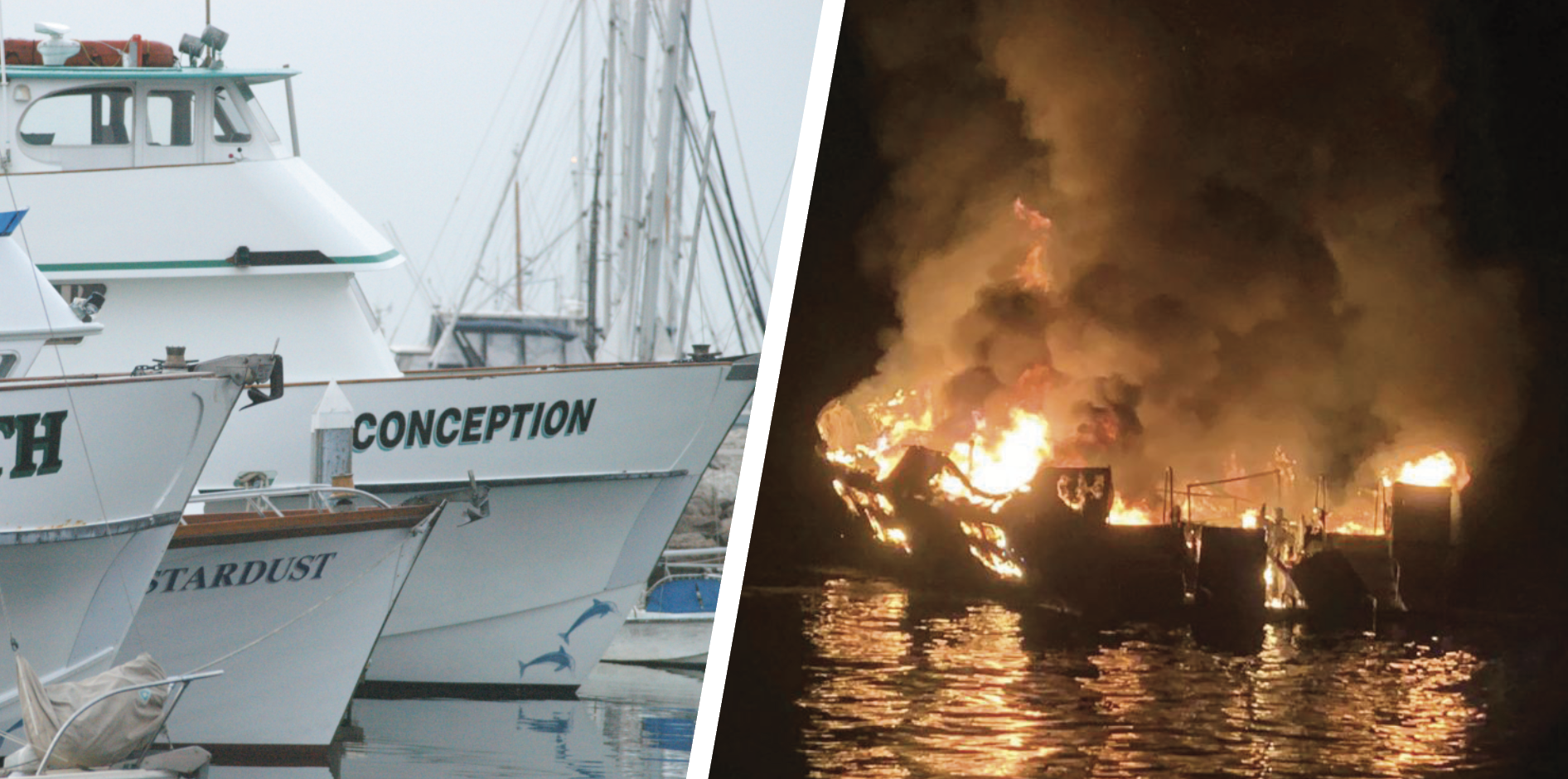
Thirty-four dead. A furious flash fire on the high seas in the black of night.
It happened in the early morning hours of Monday, September 2, Labor Day — all within 20 yards of Santa Cruz Island.
Five crewmembers managed to escape with their lives. They’d been sleeping upstairs on the top deck.
Everyone else slept in bunks on the lowest of the boat’s three levels. That’s where the rocking of the sea intrudes the least on a good night’s sleep.
The fire was so hot, it cut clean through the anchor line. Were it not for the intervention of TowBoatUS, aka Vessel Assist, a private company offering “roadside assistance,” the boat, the Conception, would have drifted.
After just under 24 hours, the search for possible survivors had been called off; the search for the bodies commenced.
Of the victims, we know little: A family of five from Stockton. A couple of kids — and their accompanying parents — from a charter school in Santa Cruz. The 41-year-old co-owner of Worldwide Diving Adventures, the Santa Cruz–based company that chartered the boat. And a 26-year-old woman who’d only recently started working for Truth Aquatics, the Santa Barbara charter boat company that owned and custom built the 75-foot-long Conception. They were all on board for a three-day diving excursion to explore the waters off the Channel Islands.
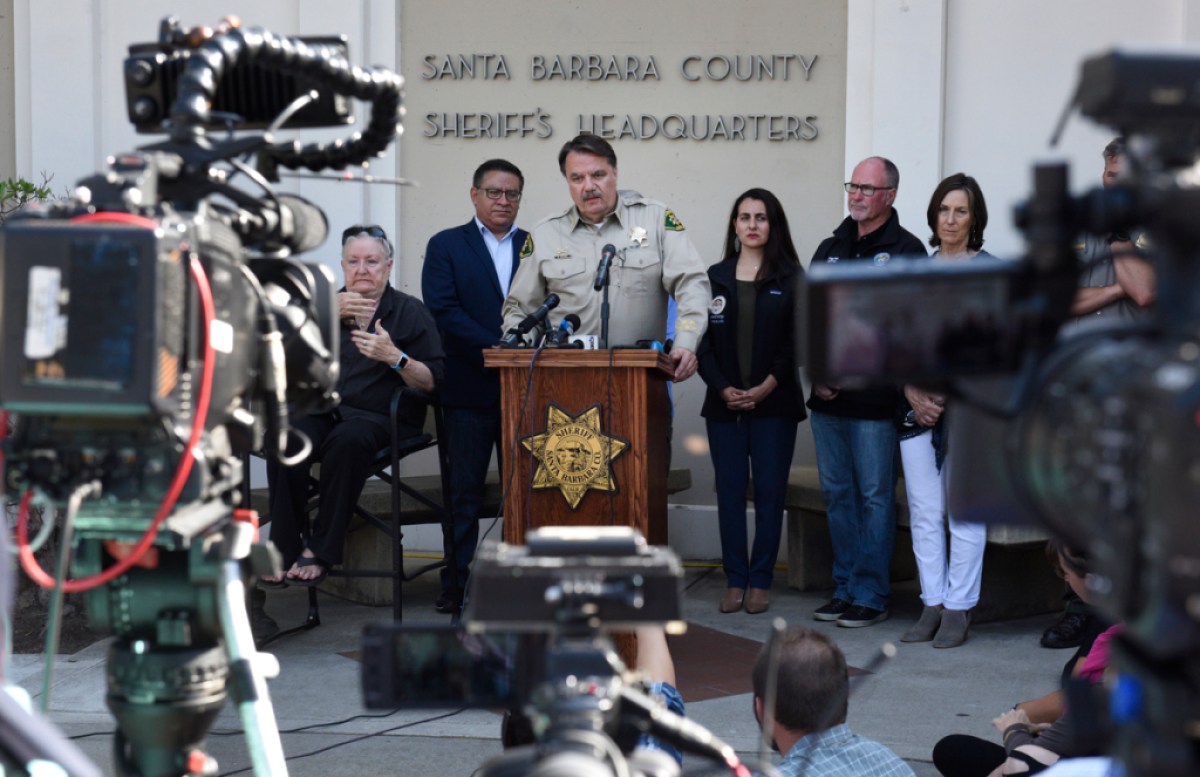
We don’t know most of their identities. Their stories — and their names — will slowly be released in the days ahead. That’s when authorities will start matching DNA samples taken from bodies marked by what Santa Barbara County Sheriff Bill Brown has described as “extreme thermal damage” with the same genetic material volunteered by anxious relatives of those whose names appeared on the ship’s manifest. As of this writing, 30 families have contacted the Santa Barbara Sheriff’s Office.
Thirty-four dead.
By the standards of Santa Barbara catastrophes, 34 deaths is the worst there’s ever been. The Thomas Fire and debris flow combined claimed 25 casualties. The earthquake of 1925 claimed 13 lives.
Exactly what triggered this fire, no one knows. Every government agency with enough initials to contribute to an alphabet soup is investigating that question. Even the FBI is on the case, though there’s no evidence to suggest anything “criminal or nefarious,” as Lt. Erik Raney of the Santa Barbara County Sheriff’s Office put it. On Tuesday, the first of 16 agents with the National Transportation Safety Board descended on Santa Barbara. They have designated the Conception disaster a “major marine casualty incident.”
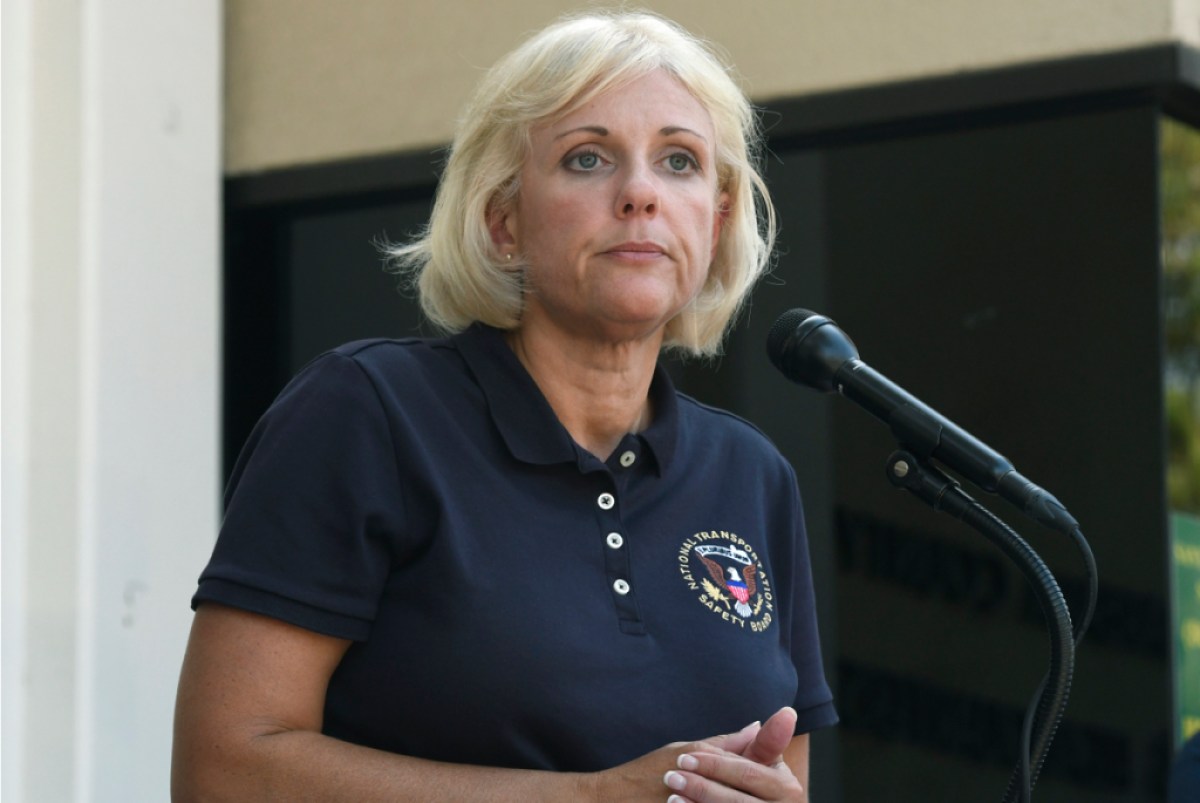
They’re here, they announced at a Tuesday press conference, to determine what went wrong and how to make sure it doesn’t happen again. To that end, they will interview the five surviving crewmembers, the companies involved, the first responders, and the Good Samaritan couple, Bob and Shirley Hansen, who offered safe haven for the surviving crew on their boat, the Grape Escape. They’ll also digest every report written on the incident by the more than 12 government agencies engaged thus far. The final report, they said, could take two years to finish. But they should know what happened within 10 days. That’s when they expect to be able to release a preliminary report.
For people familiar with Truth Aquatics, it all makes absolutely no sense. A charter dive boat company started 35 years ago, Truth Aquatics has long enjoyed a reputation for scrupulous — ruthless, even — attention to safety details. Its customers sing the company’s praises, as do they for Jerry Boylan, captain of the Conception — one of three charter boats Truth Aquatics owns and operates. Longtime fisherman Nick Voss, familiar with the boat, the company, and the captain, praised the operation. “It’s so well-run, so clean, so tight,” he said. “Their boats are just so immaculate. You could eat off the engine.”
What we do know comes courtesy of Sheriff Brown and U.S. Coast Guard Captain Monica Rochester. The boat had passed its annual fire-safety inspections. It was equipped with working fire extinguishers and smoke detectors. Likewise, there were two functioning escape hatches leading to the deck from the bottom level, where passengers slept on triple-decker bunk beds. And no, they both stressed, there were no locked doors keeping passengers trapped in their bunks down below. There are, in fact, no locked doors anywhere on the boat.
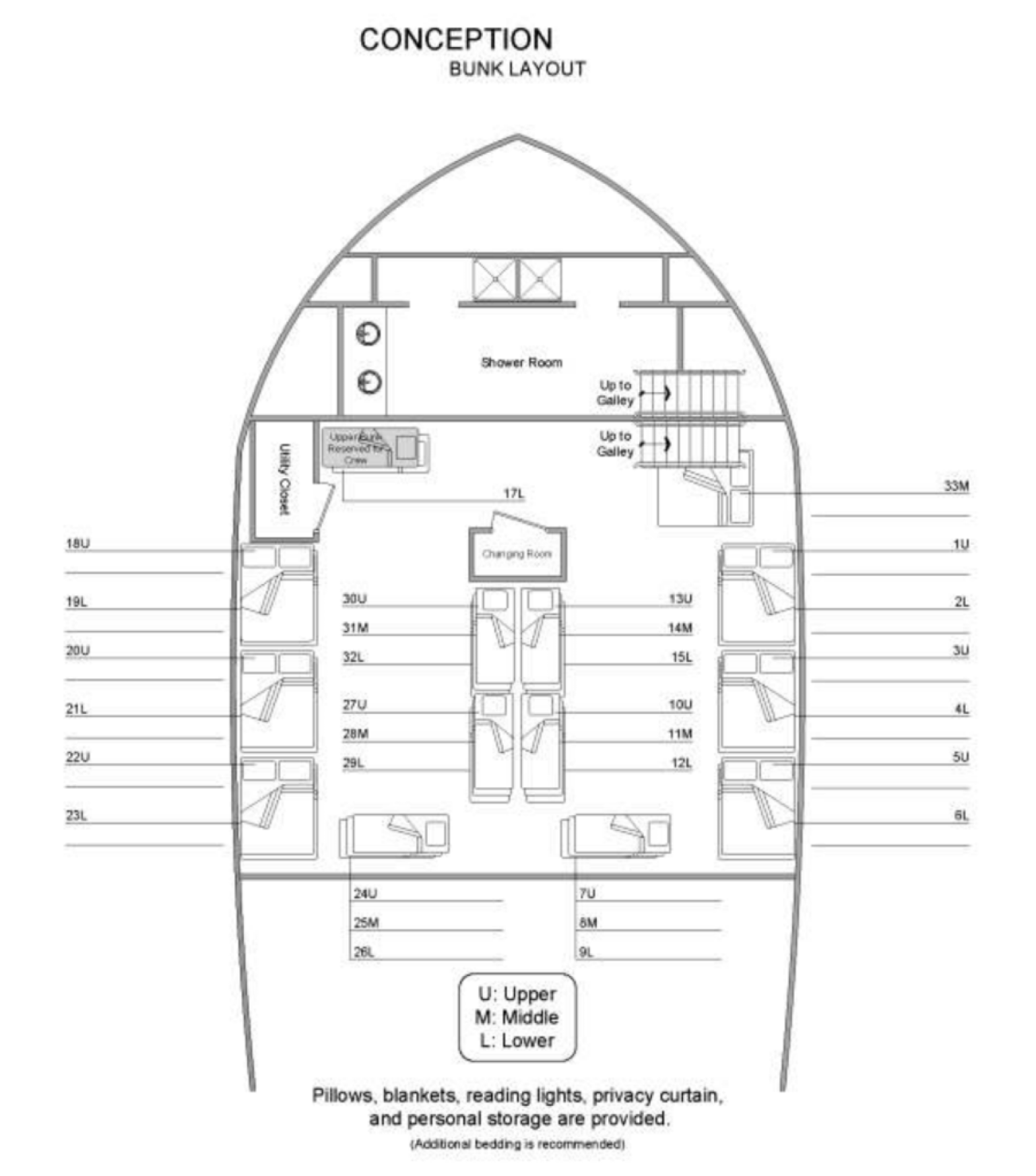
The first Mayday alert was reported at 3:30 in the morning of September 2. The message was garbled and frantic; the boat was fully engulfed in flames. The second Mayday alert came from the Hansens on the Grape Escape, who reportedly said they heard explosions. The five crewmembers who had managed to escape, in a rubber dinghy that had been attached to the stern of the Conception, paddled to Hansen’s boat, which was just a few hundred yards away from their burning boat. Several of them then returned to the Conception to look for survivors, but none were found. The Coast Guard, along with firefighting boats from Ventura and Santa Barbara, were on hand within 40 minutes. But by 7:20 a.m., the Conception had sunk.
As of this writing, 33 bodies have been recovered. The Conception is reportedly capsized 65 feet below the ocean’s surface on the north side of Santa Cruz Island; trying to get it out of the water will be a major engineering ordeal. With the vessel turned upside down, heavy equipment on board could come unhinged, which made recovery efforts dangerous, especially for divers searching for the missing bodies around the sunken boat. Also alarming — for a host of environmental reasons — is the 1,500 gallons of diesel fuel the Conception had carried. It’s not known how much remains in the damaged vessel, but the possibility that the fuel could begin leaking into the waters around the sensitive marine habitat is of serious concern.
Whether the explosions caused the fire or the fire caused the explosions, Sheriff Brown takes pains to stress, no one knows. He’s not even certain there is definitive evidence that there was an explosion. Almost everyone along Santa Barbara’s waterfront — now occupied by a multitude of TV news trucks — has a theory. Some suggest a generator failure. Others — more intriguingly — wonder if lithium-ion batteries that were most likely recharging in the Conception’s main-deck galley might have provided both the fuse and the dynamite needed to ignite the ferocious conflagration. Such batteries are now commonly used for powering photo and video equipment. Most airline companies refuse to allow lithium-ion batteries to be checked in with luggage. In 2017, the Federal Aviation Administration was aware of 46 “incidents” involving lithium-ion equipment. While canisters of oxygen and nitrox — a nitrogen-oxygen combination used by divers — are neither flammable nor explosive by themselves, their contents could help turn a small flame into a big fire in a hurry.
What we know is that to escape from the bunk room, the passengers would have had to go up the stairs and through the galley to reach the open deck. But according to Sheriff Brown, smoke and flames had blocked that escape route as well as the escape hatch. The crew reportedly all but hectored passengers about these safety features. As Senator Dianne Feinstein noted in calling for a federal investigation, boats — even the best — are inadequately engineered and new rules may be necessary.
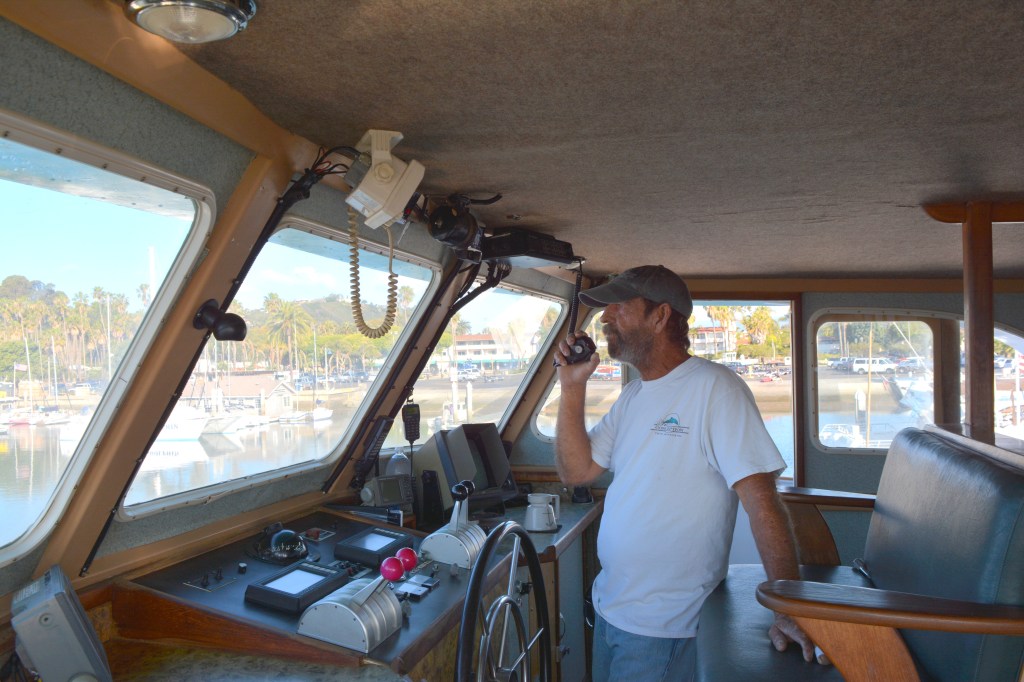
In the meantime, members of the crew are keeping their distance from media inquiries for a host of legal and emotional reasons that seem self-evident.
The Santa Barbara Coroner’s Office, which has received the recovered bodies, is now at its maximum capacity. The Los Angeles County Medical Examiner-Coroner dispatched a couple of mobile cooling units and some staff to help with the process of determining the identities of the victims and their causes of death. Lt. Raney stated the condition of the victims’ bodies varies. Not all, he said, require DNA testing to determine identity.
Teams of divers from at least four different law enforcement agencies scoured the ocean floor for the remains of the passengers, and the search continues for the 34th.
“This is probably the worst-case scenario,” said Sheriff Bill Brown.


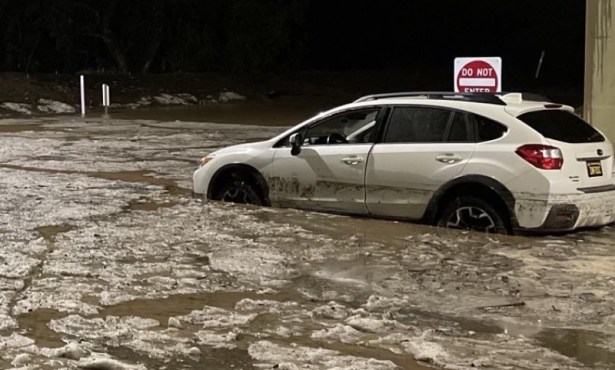
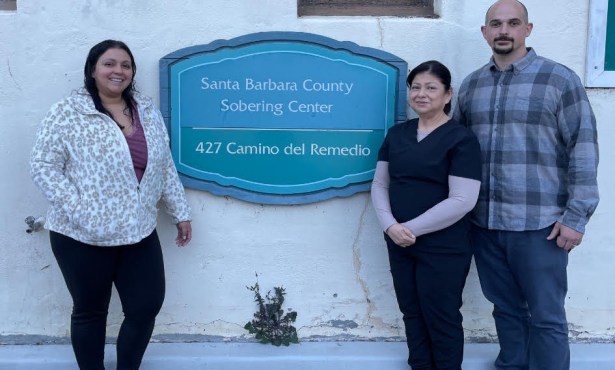
You must be logged in to post a comment.